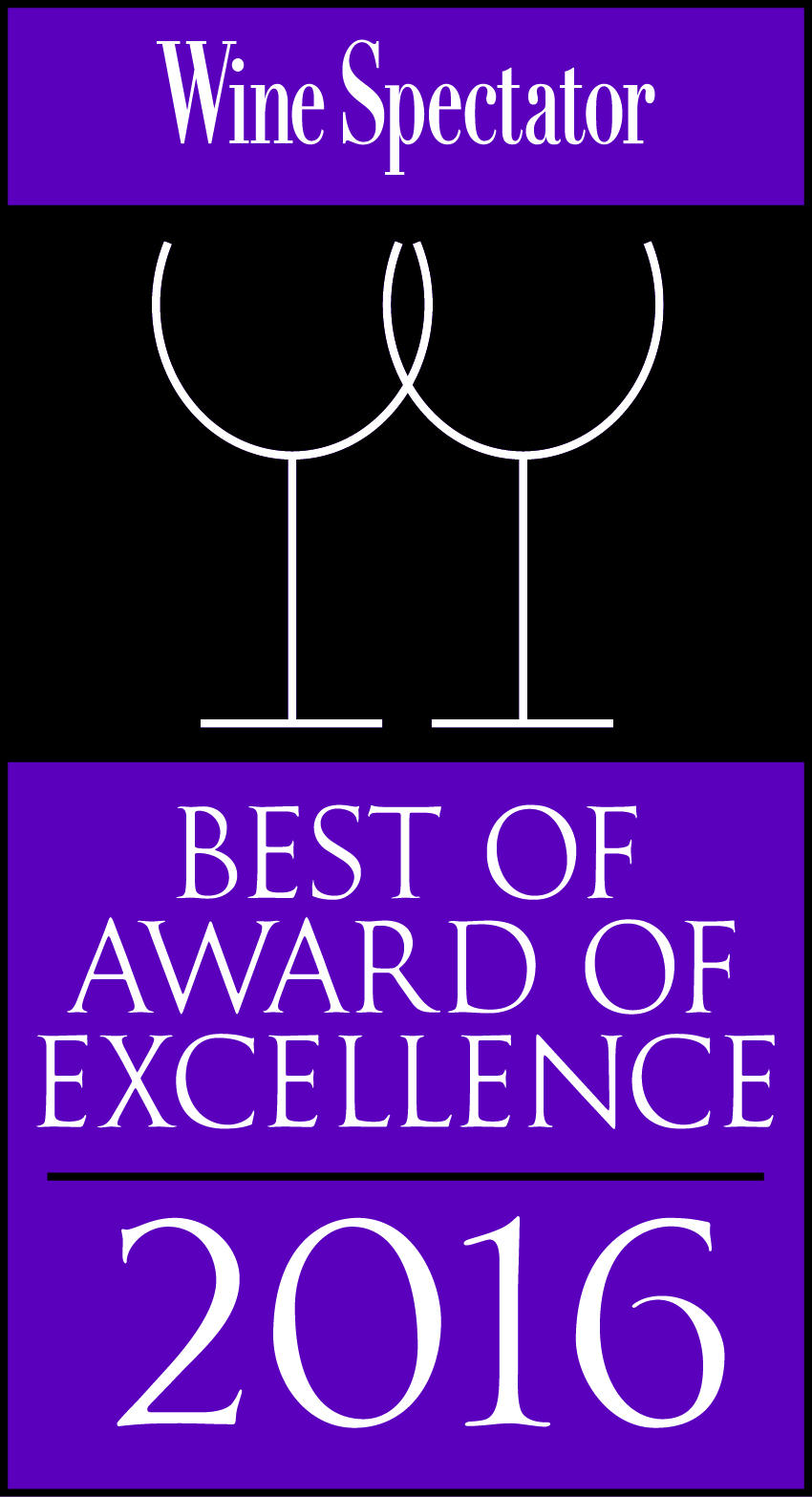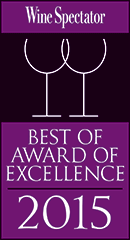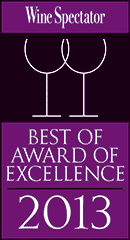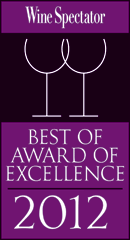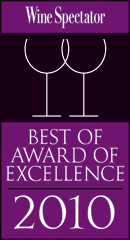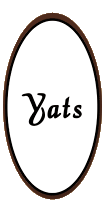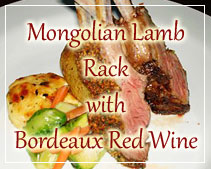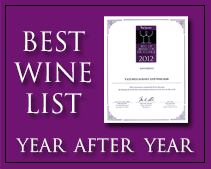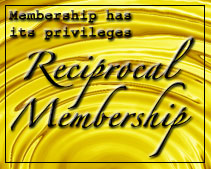Flood of Chilean wines
Date: December 11, 2010
About Wines from Chile
Best wine supplier in Philippines discusses wine related topics
There’s been a stampede on the part of importers to offer Chilean wines. The reason is simple: they often don’t cost very much and our local wineries have abandoned most of the “Under Ten Buck” segment of the wine market.
While it’s been true that many Chilean wines are cheap, it’s also true that many Chilean wines taste cheap, too. Frankly, we have a small selection of Chilean wines. There is a more forgiving segment of the market which grew up on Chilean wines. This segment of the market has been willing to purchase inferior wines with famous labels. Happily we’re seeing an improvement in the overall quality of Chilean wines and there are some producers who attempt to make serious quality wines which can compete on an international basis.
We are presently seeing a number of “deluxe” bottlings from Chile. Some of these show evidence of superior wine-growing and high-caliber wine-making. The question is, of course, will the market pay attention to these premium bottlings? Some, indeed, are of an international standard. Many only aspire to be great, falling short in delivering the goods. Caveat emptor.
Chile has long been producing wine, though it’s only relatively recently that American wine drinkers have been introduced. The Spanish were amongst the first to settle and engage in wine growing. Spain was a leading recipient of Chilean wines and the “mother country” attempted to control the “kids” by imposing taxes on wine imports to Spain and vineyards in Chile. This, naturally, didn’t meet with great enthusiasm on the part of those in the “new world.”
Chilean history is commemorated on some wine bottles. Santa Rita makes a line of wines called “120,” in honor of the 120 soldiers who had fled with General Bernardo O’Higgins in a skirmish with Spanish forces. Teaming up with an Argentinean general, O’Higgins returned with the 120 team, plus four or five thousand more and were victorious in further battles with the Spanish. In 1818, O’Higgins became the head of the new republic of Chile.
A few years after, French scientists and vineyard people made their way to South America. They often brought cuttings from home, typically Bordeaux varieties.
Exports of wine became very important in the 1880s and into the 20th century. Europe was under siege: the root louse phylloxera was a major disaster and Chile was able to supply quantities of wine. To this point, Chile remains untouched by phylloxera.
Things deteriorated with the replanting of vineyards in Europe and exports fell off significantly. The government in Chile even imposed limits on production. Then, the Allende government nationalized many vineyards, taking them from their owners. The Pinochet regime, starting in the mid-1970s, wasn’t much more helpful, restricting exports. A significant percentage of Chilean vineyards were uprooted during this period. The winds of change began blowing in the late-1980s and have been increasing to hurricane status ever since! A somewhat stable democracy has encouraged foreign investment and today you’ll find French, American and other concerns investing in vineyards and wineries.
Chile is something like the 12th largest wine producing country in the world. There are approximately 271,000 acres of vineyards there. Well north of the capital city of Santiago are vineyards devoted to producing table grapes and grapes intended for distillation rather than winemaking. It is from these vines that the famous Chilean white lightning comes from (it’s called Pisco).
Fifty miles north of Santiago is the Aconcagua Valley. This region lies about 150 miles due west of Argentina’s famous Mendoza area. It is a small and rather dry region, with about 979 acres of vines, primarily Cabernet Sauvignon.
South of Aconcagua and west of Santiago is the Casablanca Valley. Some say this is prime Sauvignon Blanc and Chardonnay territory having some marine-influenced climate due to its proximity to the Pacific Ocean. It has about 4000 acres planted as of the most recent statistics.
South of Casablanca and southwest of Santiago is the Maipo Valley. It comes under the “Valle Central” appellation and is a bit warmer; apparently Cabernet and Chardonnay thrive here. There are some 15,000 acres of vineyards in the Maipo.
South of the Maipo Valley (and 80 miles south of Santiago) is the Rapel Valley, also part of the “Valle Central” designation. A well-regarded sub-region of Rapel is the Colchagua Valley. Both Merlot and Cabernet do well there. The Rapel has vines spread over slightly more than 30,000 acres, approximately 60% in red varieties.
Also in the “Valle Central” area is the southerly Curico Valley, an area where Merlot and Sauvignon Blanc do well. This was only recently given its own designation, as it used to be considered a sub-zone of the Maule. Temperatures here vary greatly, meaning you can get sun burn during the day and the fifty-degree drop at night puts the “chill” in “Chile.” Twenty-eight thousand acres of vines live in this area.
The Maule is 160 miles south of Santiago and it’s a big region, with 40,000 acres. The money varieties are planted here, so you’ll find lots of Sauvignon Blanc, Chardonnay, Cabernet Sauvignon and Merlot.
Southern Chilean features the “Valle del Itata,” Some 11,000 acres of vineyards are there. The region has been the home of rather ordinary grape varieties and only today are a couple of firms starting to cultivate more noble grapes. Just south of Itata is the Valle del Bío-Bío. This is a difficult viticultural area, it being prone to spring frosts and early autumn precipitation. Early-ripening varieties such as Pinot Noir and Riesling may have a future in Bío-Bío.
Not even “on the map” is the Valle de San Antonio. There are but a few new vineyards in this region, some 75 kilometers east of Santiago, but the early results are quite promising. Most of this region features relatively cool climates, so planting varieties such as Chardonnay, Pinot Noir or Syrah might be a good idea.
One curiosity about Chile’s exports. They’ve been sending a lot of “Merlot” to foreign markets, but it seems the Merlot is not Merlot at all! There has been a variety called “Carmenere” which used to be more widely cultivated in Bordeaux. According to Agustin Huneeus, a Chilean fellow who has interests in California as well as South America, the variety was brought to Chile along with Cabernet and Merlot back in the 1850s. He says it is difficult to grow, thus it faded out of the Bordeaux scene in France. The Chileans, he says, simply call it Merlot. Or used to call it Merlot. Now they’re selling loads of Carmenere wines here in the U.S. We’ve tasted a number of these and, to this point, have found them to be, from time to time, pretty interesting wines.
VIU MANENT
wpe2F.jpg (4305 bytes)Don Miguel Viu Manent’s family originated in Catalonia (some people call that part of the world “Spain,” much to the chagrin of the locals). In 1966 he purchased the San Carlos de Cunaco winery but it took until 1990 for them to seriously make wine. We used to have some lovely wines of theirs under the “San Carlos” label. However, either some of our customers thought the wine came from just south of Belmont/just north of Redwood City or the family figured the name was too easy for Americans to pronounce, so let’s put our name “Viu Manent” on the bottle and really confuse those people. Whatever.
All their wines come from estate vineyards.
Anyway, they make a really remarkable Colchagua Valley Cabernet Sauvignon. Well, it’s remarkable wine which we sell for five bucks. Deep purple in color, it has a really nice fragrance of berries and cassis. I don’t think this wine sees any oak…how could they afford to put it in wood? We sale price it as a “lost leader” so people will flock to the shop looking for the best five buck red in the Bay Area…and they do.
The 2007 Malbec is a remarkable wine for six bucks. Deep in color, this was bottled unfiltered after a six month cycle in wood. This vintage reminds us more of a Zinfandel, as the wine shows some spice notes. It is quite different from the preceding vintage.
A Special Selection of Malbec is very nice. Here’s a wine that’s comparable to a good level of Bordeaux or Napa Cabernet which has evidence of ripe fruit and cedary oak. Though it’s a young wine, you can certainly drink it now.
Currently available: 2007 Viu Manent Cabernet Sauvignon Sale $4.99
2007 Viu Manent Malbec Sale $5.99
2007 Viu Manent “Reserve” Malbec $9.99
EQ–VIÑA MATETIC
From the Valle de San Antonio come some amazingly interesting wines under the EQ label. The idea is this wine is balanced or has equilibrium. And how!
Ken Bernards of the Ancien wine company in California is in charge of winemaking.
We have been impressed with the EQ wines. First, we have thought Syrah would be a promising variety for South America and wondered why it’s a rare one that’s of interest. Well, Bernards’ 2003 is the third vintage that’s worth a look. It’s a shade less dark and has a spicy tone much like the Syrah wines from the Northern Rhône. I brought a bottle to a dinner in San Francisco where the guest of honor was a well-regarded vigneron who makes Crozes-Hermitage and Saint-Joseph. He took a sniff and a taste of this, poured ‘blind’, and immediately guessed it to be a wine from his very own neck of the enological woods. The poor fellow was mortified when I unveiled the bottle and it turned out to be a New World wine! Even more shocking to this fellow was it comes from Chile! This was about as shocking to him as if he had tasted a wine from Mars (Michael Mondavi would not be shocked about Martian wine–see the film Mondovino to better comprehend this attempt at humor).
The 2004 won some sort of tasting event and its availability evaporated quickly. The 2005 just arrived and we were eager to taste it.
It’s another winner, thank you!
The 2005 comes from two clones of Syrah. The juice is macerated for several days at low temperatures to do what’s called a “cold soak.” The wine is matured in French oak and despite 55% of the barrels being new, you can’t really detect that much wood. The pepper spice notes dominate. Hints of white pepper mingle nicely with black pepper fragrances. The wine is medium-full on the palate. Thoroughly delicious!
A 2005 Pinot Noir is amazing! Who would think Chile would produce a wine that’s a ringer for a lovely Sonoma Coast or Carneros Pinot Noir? Yet Bernards has bottled a superb Pinot Noir, easily the best South American Pinot we’ve run across. (Most producers treat that variety with little respect, for one thing. Secondly, aside from farming it badly, they try to make it in the same fashion as every other red wine they make and the grape positively rebels from this treatment.) I don’t think it’s a wine for cellaring, but to drink right away, it sure is delicious. We had last year’s wine in a blind-tasting and it won. The 2005 was included in a blind-tasting and I pegged it as the top wine and it finished in second place, a mere one point behind a $45 bottle from New Zealand.
The 2006 Sauvignon Blanc from EQ is also surprisingly good. It has an element of New Zealand’s citrusy Sauvignons with a touch of minerality from a Bordeaux area white wine. Some of the wine is fermented in stainless steel and a modest amount is vinified in oak. You’ll be hard-pressed to find the wood, though. I am not sensitive to it. Reasonably crisp and dry, this is perfect for seafood and a ‘complete’ wine. (I find few California Sauvignons to have ‘everything’; that is, good nose, nice flavor and a decently lengthy finish.)
The 2005 Chardonnay is remarkably good. These guys don’t miss, apparently. It’s our first Chardonnay and they’re not making much of this wine. It comes from a couple of small parcels. What’s especially interesting is the range of fragrances and flavors. It’s not just a “one note samba,” but a bunch of different chords are struck here. I read they try to pick the grapes at various levels of maturity in an effort to produce a wine of greater complexity. It’s fermented in French oak, but new wood accounts for but about one-third of the cooperage. I find it similar to a couple of our favorite California Chardonnays. If you know the wine of Talley Vineyards, for example, that will give you an idea of this wine’s balance and style.
Currently in stock: 2005 EQ Syrah $29.99
2005 EQ Pinot Noir $29.99
2006 EQ Sauvignon Blanc $15.99
2005 EQ Chardonnay $21.99
MONTES ALPHA
This winery was founded in 1988, Señor Montes having the idea of making really “good” Chilean wine instead of the prevailing custom of making really “cheap” Chilean wine. What a concept! Quality.
It turns out this fellow is on the right track, though.
We’ve rarely found the mainstream wines of Chile to be “world class.” Typically they’re more bottom-of-the-barrel/acceptable-for-a-low-price.
Montes has caused a bit of a change in Chile. Winemakers are seeing it is possible to establish a brand in foreign markets if you have quality.
The really stunning fine bottle is called Montes Alpha “M.”
Here’s a wine from Apalta, a sub-region of the Colchagua Valley. Anyone tasting this wine and not saying it’s, at the least, in the realm of “damned good” to “excellent” simply has steel wool for a palate. The wine comes from vineyards just 18 miles from the coast. Cool nights allow for a retention of acidity in the fruit. Cabernet Sauvignon accounts for 80% of the blend, the rest being Merlot and Cabernet Franc. French oak. The fine-grained tannins allow for this to be consumed in its youth. With pleasure.
A Syrah demonstrates that this variety has potential in Chile. The wine has about as much Syrah character as many Napa Valley Syrahs. That is to say, you won’t mistake this for a Côte-Rôtie, for example, but it is a nice red. Medium bodied and mildly oaked, it’s a good wine to pair with grilled or roasted meats.
Chardonnay from this estate comes from the Casablanca Valley. They’ve done a nice job to incorporate some oak in the wine, but not too much wood that you’re picking splinters out of your palate. The 2003 vintage saw about 25% new barrels, the rest of the cooperage being somewhere between one and three years old. A bit less than half the wine undergoes a secondary, malolactic fermentation so there is a buttery note, but it’s not a butterball. It’s also dry, thank you.
This Montes black label wine is remarkably good. It’s a 2007 vintage blend of Cabernet Sauvignon and Carmenere. The wine comes from the Colchagua Valley and is matured in American oak.
We really like this exceptionally appealing wine…it beats the hell out of anything we’ve found from California in this price category.
Winemaker Aurelio Montes had experimented with various percentage blends, finally deciding the 70% Cabernet and 30% Carmenere was the best. He sure hit that nail on the head!
Their Montes Alpha Cabernet from the 2003 vintage is quite good, though I prefer the less-costly blend of Cabernet and Carmenere.
This is blended with about 15% Merlot and matured for a year in French oak. About one-third of the barrels are brand new and the others are once or twice-used barrels. The wine exhibits nice red fruit notes and a touch of cedar. It’s medium bodied and drinkable now, though it ought to mature nicely over the next few years.
A Sauvignon Blanc comes from the Leyda Valley, a new appellation that’s west of Santiago and about 10-14 miles east of the Pacific Ocean. It’s a cool climate region, so varieties such as Pinot Noir and Syrah can thrive there in most vintages. We’ll add Sauvignon Blanc to the list based upon this wine! We like the citrusy and herbal overtones to this crisp, somewhat minerally, dry white. It’s a great cocktail white…perfect for sushi, especially if you’re a fan of wasabi. And it will pair quite handsomely with lots of seafood.
Our sales rep for Montes, having trekked to Chile this past year, gets teary-eyed when she thinks of her lovely visit to the Montes winery and her sips of this lovely Sauvignon. I’ll bet she’ll remember that visit and this wine for the rest of her life (and she’s a young lady!).
We tasted a 2004 Montes’ Folly, a wine we’re told is made of Syrah. I could not detect Syrah as I know it in the wine. I did find a big, tannic, rough-and-tumble wine which will probably please some of the point-counting wine critics. I was not pleased by the wine, nor its lofty price. C’est la vie.
Currently in stock: Montes Alpha 2004 Syrah $16.99
Montes Alpha “M” 2001 Vintage $64.99
Montes Alpha 2003 Chardonnay $16.99
Montes 2007 Leyda Sauvignon Blanc $12.99
Montes Alpha 2003 Cabernet Sauvignon $16.99
Montes 2007 Cabernet/Carmenere $12.99
ARESTI
The Aresti family started this winery in 1951, but it took them a while to actually start selling wine in bottles…1999 saw their first sale of bottled wine under the Aresti label!
The estate is still family-owned and run by Aresti family members.
They have approximately 400 hectares of vineyards presently and they’ve acquired additional terrain for future plantings.
We found a rather delightful Pinot Noir from the Aresti family, a variety that’s not especially prominent in Chilean winemaking. We’re told, however, that as a result of Pinot Noir’s sudden popularity in the United States, hundreds of acres have been planted in Chile.
They did a pre-fermentation, cold soak for the juice and put the wine in oak for its maturation. It’s remarkably good for ten bucks and shows nice strawberry and cherry-like fruit on the nose. I can’t find much in the way of wood here, but the Pinot Noir character is pretty clear. The wine is light to medium in body and best served at cool cellar temp. It’s not a wine intended for much cellaring, unless you consider a week’s time to be the optimum period for ‘aging.’
CASA LAPOSTOLLE
casalap.gif (4530 bytes)With French ownership, the property owned by the Marnier-Lapostolle family is making, to our tastes, some of the finest wines in South America. Alexandra Marnier-Lapostolle is the young visionary behind this large firm. The winery is located in the Rapel Valley. The firm owns more than 700 acres of its own and then leases another 400 to produce more than 100,000 cases annually.
Having tasted their “regular” wines, including the Sauvignon Blanc which is touted frequently in The Wine Advocate, we have not been impressed by the initial efforts here. The current bottling, 2004, is more interesting than its predecessors, though. I found it brighter and showing more fresh fruit notes.
In 1998 we included a bottle of their Cuvée Alexandre in a blind tasting of Chardonnays from around the world. If I had been handicapping the tasting, this surely would have been picked to finish in last place. After all, it was pitted against Jacques Seysses’ “Druid” (Dujac) Puligny-Montrachet, Kumeu River from New Zealand, Pierro from Australia, Torres’ “Milmanda” from Spain, Beringer’s Sbragia Chardonnay, as well as a Peter Michael from Sonoma. Well, surprise, surprise! As we unveiled the wines, last place to first, the Chilean wine hung in there….it finished one lone point behind the Puligny-Montrachet! We don’t conduct our blind tastings to “sell” wine. But we sold a bunch of Casa Lapostolle as a result! The wine comes from the Casablanca region and it’s entirely barrel-fermented in French oak. When one vintage (I think it was the 2003) got a high numerical score someplace, the wine became rather unobtainable. Since then, customers are supposed to buy the wine based upon its fame and reputation…we do not have any in the shop and I have not bought a bottle to evaluate it.
The Cuvee Alexandre Merlot demonstrates French globe-trotting winemaker Michel Rolland’s mastery of this grape, whether in his native Bordeaux or elsewhere. It is difficult to obtain and allocated. Like the Merlot, their Cabernet for the Cuvee Alexandre designation comes from the Colchagua area of the Rapel Valley. Both are from 60-year-old vines. Both spend 12 apalta.gif (9779 bytes) months maturing in French oak. If you want to taste Chilean wine made with intelligence and passion, these are not to be missed.
Clos Apalta is their deluxe blend. The first vintage or two were primarily Merlot. More recent vintages have featured Merlot and Carmenere. It’s been quite a good bottle of wine over the years and the marketing people love to hoard this. They view it as a ‘reward’ to customers who purchase their other wines.
A new, exciting Syrah debuted with the 2001 vintage. We have had a few vintages of this wine, but since it’s become so popular, apparently, we have not been allowed to buy even a single bottle to taste and evaluate, much less to have wine in the shop for sale.
A curious blend is a recent addition to their portfolio. It’s called Borobo. “Bordeaux, Rhone and Bourgogne.” I bought one of these and could not understand what they were trying to achieve by blending Pinot Noir with Carmenere, Merlot, Syrah and Cabernet. The current vintage wholesales for more than $50 a bottle…What are they thinking???
SANTA RITA
The history of this winery goes back to about 1880, but the winemaking has been rather “modern” for quite a while.
In the early days of Chilean wines arriving in the U.S. market, we often found the Santa Rita wines to be bright, fruity and balanced. No “off” elements were noted in their wines and the prices were usually quite reasonable.
We didn’t carry the wines for years because their U.S. importer would unload the wines to a chain store which would retail them for about the same price as the wines cost from the Santa Rita wholesaler. Why this distributor in California permitted this practice, I will never understand. The winery, however, changed importers and we are able to offer the wine at a competitive price and one which is sensible, given the quality.
I bought a bottle of their 2007 Cabernet Sauvignon from their “120” line of wines. This number has special significance in Chile’s history. It refers to the 120 “freedom fighters” who waged battle against the Spanish army in the early 1800s. This band of soldiers was given refuge in what is the Santa Rita hacienda where they regained their strength in Chile’s fight for independence.
The fruit comes from Chile’s Valle Central. Most of the wine was retained in stainless steel to preserve the fruity aspects of this wine. Only 10% was barrel aged and only for 8 months. You won’t find this to be a huge, deep, complex red wine and it won’t compare in intensity to a big Napa or Australian Cabernet. On the other hand, it’s selling presently for less money than you’ll pay to taste two or three sips of wine at most Napa wineries. We find a nice, fruity, cherryish aspect to the fruit character. Maybe a hint of plums, too. Not much in the way or wood or tannin, so this is drinkable immediately and best at cool cellar temperature. It’s not intended for cellaring, so enjoy it when it’s young and fruity.
SOURCE: http://www.weimax.com/chilean_wines.htm
Are these articles useful for enhancing your wine and dine experience in the Philippines. Do they also help you with travel, leisure, vacation, dining out, nightlife and other leisure activities plans in Manila and other major cities of Philippines? Yats Restaurant hopes to provide you with ample information so you can plan your trips to Pampanga Angeles City Clark Freeport Zone whether you are travelling from Manila or other Asian countries such as Hong Kong, Shanghai, Singapore, Malaysia or Korea.
Restaurant reservations in Manila Philippines, planning of menu, selection of wine for dinner and booking a private function and event in Angeles City Clark Freeport Zone can all be handled. Yats Restaurant and Wine Bar has been regarded by many to be the premier restaurant north of Manila Philippines. Its 3000-line award-winning restaurant wine list has kept many wine lovers happy dining in this restaurant in Angeles City Clark Philippines for over a decade.
Yats Restaurant and Wine Bar was built by Hong Kong-based Yats International in 2000 to provide a world-class cozy fine dining restaurant, business meeting facilities and venues for private dinners and functions in Pampanga Angeles City Clark Freeport Zone. Pampanga Angeles City Clark Philippines was selected for this restaurant because of safety, clean air, absence of traffic and proximity to Manila and Subic.
For comments, inquiries and reservations, email Restaurant@Yats-International.com or call these numbers:
(045) 599-5600 0922-870-5178 0917-520-4401
Http://www.YatsRestaurant.com
Getting to this fine dining restaurant of Angeles City Clark Freeport Zone Pampanga Philippines
How to get to this fine-dining restaurant in Clark Philippines? Once you get to Clark Freeport, go straight until you hit Mimosa. After you enter Mimosa, stay on the left on Mimosa Drive, go past the Holiday Inn and Yats Restaurant (green top, independent 1-storey structure) is on your left. Just past the Yats Restaurant is the London Pub.
